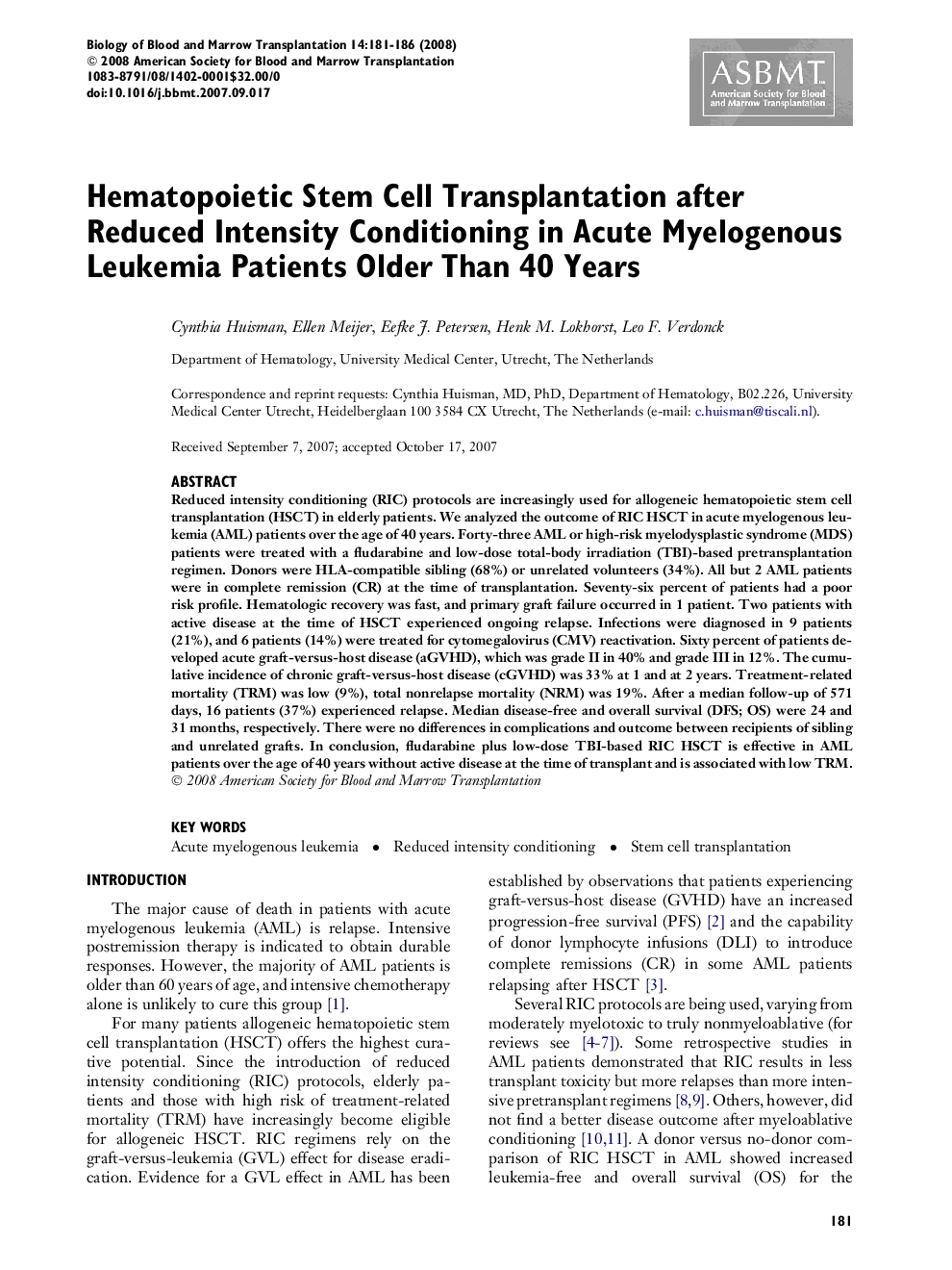| Article ID | Journal | Published Year | Pages | File Type |
|---|---|---|---|---|
| 2104179 | Biology of Blood and Marrow Transplantation | 2008 | 6 Pages |
Reduced intensity conditioning (RIC) protocols are increasingly used for allogeneic hematopoietic stem cell transplantation (HSCT) in elderly patients. We analyzed the outcome of RIC HSCT in acute myelogenous leukemia (AML) patients over the age of 40 years. Forty-three AML or high-risk myelodysplastic syndrome (MDS) patients were treated with a fludarabine and low-dose total-body irradiation (TBI)-based pretransplantation regimen. Donors were HLA-compatible sibling (68%) or unrelated volunteers (34%). All but 2 AML patients were in complete remission (CR) at the time of transplantation. Seventy-six percent of patients had a poor risk profile. Hematologic recovery was fast, and primary graft failure occurred in 1 patient. Two patients with active disease at the time of HSCT experienced ongoing relapse. Infections were diagnosed in 9 patients (21%), and 6 patients (14%) were treated for cytomegalovirus (CMV) reactivation. Sixty percent of patients developed acute graft-versus-host disease (aGVHD), which was grade II in 40% and grade III in 12%. The cumulative incidence of chronic graft-versus-host disease (cGVHD) was 33% at 1 and at 2 years. Treatment-related mortality (TRM) was low (9%), total nonrelapse mortality (NRM) was 19%. After a median follow-up of 571 days, 16 patients (37%) experienced relapse. Median disease-free and overall survival (DFS; OS) were 24 and 31 months, respectively. There were no differences in complications and outcome between recipients of sibling and unrelated grafts. In conclusion, fludarabine plus low-dose TBI-based RIC HSCT is effective in AML patients over the age of 40 years without active disease at the time of transplant and is associated with low TRM.
